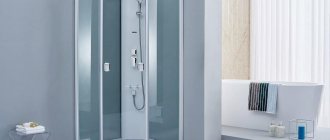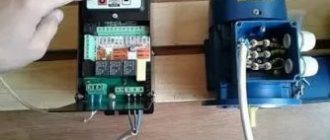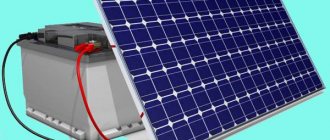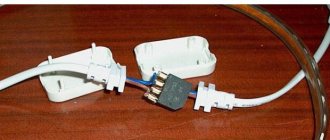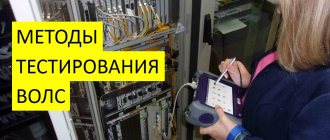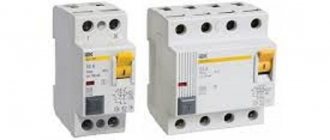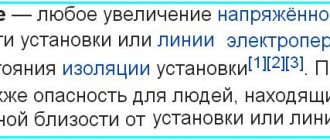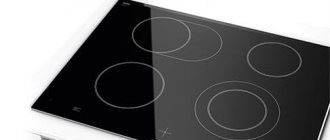It would seem that choosing a water meter
does not present any difficulty, because the modern market offers a large and wide range of these metering devices. However, everything is not so simple and easy, since when purchasing you will have to take into account a large number of objective and subjective factors: technical characteristics of devices and their operating principle; purpose of the product - for household or industrial metering, features of the water supply system and water quality. Be sure to also take into account legal regulations, as well as the requirements of the water supply company for these products.
Basic criteria used to classify water meters
Consciously or, most often, unconsciously, the buyer, when choosing a product, focuses his attention on the appearance of the product. This happens, apparently, because a person’s desire for beauty and perfection is quite strong, but such a principle is absolutely unacceptable for metering devices. Therefore, before choosing a water meter,
You should know that they all differ from each other in several ways:
- the type of material used to make the product body;
- the type of design that determines the operating principle of the device;
- purpose;
- accuracy class;
- water temperature requirements. According to this parameter, water meters are divided into devices designed for cold and hot water supply systems, as well as universal models that can be installed to service both domestic hot water and hot water supply;
- reliability;
- inter-verification period and service life;
according to the degree of autonomy. According to this criterion, water meters can be non-volatile and volatile devices. The former do not require any power source to operate and these are, as a rule, mechanical products. For those who are volatile, it is necessary to provide a connection to an external or autonomous power source in the form of lithium batteries.
Features and advantages of different types of materials used for the manufacture of water meter housings
A variety of materials are used in the manufacture of water meters, which naturally affects the final cost of the product, but, above all, this factor determines the reliability and durability of the devices. For this purpose, a material such as silumin is often used. Products made from it are highly resistant to aggressive environments, although they are susceptible to oxygen corrosion. As a rule, water meters for domestic use are made from silumin, which are intended for operation under conditions of low or medium loads.
Brass and bronze are also often used for the production of water meters. These materials are characterized by fairly high strength (including impact resistance), wear resistance and stability when exposed to various aggressive environments. Products made of stainless steel have excellent characteristics. But such meters have a noticeably higher price compared to their analogues, although they can be considered ideal metering devices for installation on a pipe used to supply drinking water.
In the production of water meters, various polymer materials are increasingly being used, although it should be recognized that individual parts are mainly made from them, which are used for products intended for metering cold water supply.
Technical characteristics of water meters
One of the first technical parameters that you need to pay attention to when choosing a water meter is the nominal diameter (DN). For household appliances, its values are 15 or 20 mm; products with DN 20-32 mm are intended for installation in private homes with increased water consumption, although they can also be used in small municipal or industrial facilities.
An important parameter of the meter that you also need to pay attention to is the installation length, which is:
- 110, 130 mm for products intended for installation in apartments;
- 190, 260 mm - for devices used to organize water consumption metering in apartment buildings or country cottages.
Standing apart are meters with an installation length of only 80 mm. These water meters are intended for installation in apartments whose conditions do not allow the installation of a device with standard parameters.
When choosing a water meter, you must also take into account the pressure limits of the device. For household water meters, the values of this indicator, as a rule, do not exceed 10 atm, but for devices with a DN of 20 mm, it is equal to 16 atm.
Important parameters are the maximum temperature values at which the device can be operated. For water meters intended for the domestic hot water system, these indicators range from 5°C to 90°C, but for some devices the upper limit can reach 130°C. Cold water meters and universal devices are mainly designed to work with temperature environments from 5°C to 40°C.
And finally, you should definitely inquire about the accuracy class of the meter you are purchasing. There are four of them: “A”, “B”, “C” and “D”. At the same time, the most accurate products are those that are marked “D”, and, accordingly, the devices with the highest error are products of class “A”. At the same time, most household water meters belong to the lower classes: “A” and “B”, however this is not a big problem for obtaining accurate results, but only if certain installation rules are followed. Class “B” water meters are capable of providing sufficiently high measurement accuracy for both vertical and horizontal installation, while class “A” meters must be installed exclusively vertically.
Water flow parameters and water meter selection
Another factor determining the choice of meter model is the average water flow rate, defined as m3/hour. This value cannot be ignored, since the accuracy of the data obtained largely depends on it. If the limit values are exceeded, the meter may produce an error in both one and the other direction. Next, you need to look at the product data sheet and ask about other flow parameters, such as:
- minimum flow rate, denoted as Qmin. This indicator indicates the minimum values at which the meter can operate normally and accurately record the amount of water consumed;
- maximum flow rate – Qmax, defined as the upper limit of the device’s ability to pump water and is also expressed in m3/hour;
- nominal flow (Qn) indicating the optimal consumption conditions under which the meter is planned to be operated continuously;
- transient flow (Qt), which is a value that determines the error of the device.
ORDER A SERVICE FROM ACCREDITED COMPANIES
Designation of digital meter indicators
Based on the electronic meter data, several readings are determined:
- Energy consumption for a specific time period. You will need to subtract the initial readings from the final readings. If necessary, the calculated data is multiplied by the transformation coefficient;
- Connecting household appliances and lighting at a certain point. Set by the indicator light coming on/off.
- Power parameters, passing current values, network and meter overload processes.
Digital devices can be programmed for day and night tariffs. To do this, just select the counting time.
Main types of water meters and principles of their operation
In addition to technical parameters, water meters differ from each other and in design. Therefore, before choosing a water meter for an apartment
, it is necessary to decide which type of device will be optimal for this, taking into account the characteristics of water consumption and the water supply system, as well as taking into account the advantages and features of each of them.
So, according to their design features, water meters are presented:
- tachometer devices, which are also called mechanical;
- vortex;
- electromagnetic;
- ultrasonic models.
Features of operation of tachometer water meters
This type of meters is most often used for household water consumption metering, and their main advantages can be considered:
- low price of products;
- simple and reliable design;
- fairly high accuracy, although with large water consumption the influence of the inertia effect cannot be excluded, which can affect the reliability of the data obtained. But basically, this problem is typical for single-jet products, so if water consumption is high, you should choose multi-string models that do not have this drawback.
But the main problem when using this type of counter should be identified, namely, the formation of salt deposits on the impeller of the device, which also negatively affects both the operation of the device and the accuracy of the results obtained. Therefore, the use of mechanical water meters for water with a high content of various impurities is impractical. Also, a disadvantage of products can be considered a small operational life, usually amounting to two calibration periods of 4-6 years.
The operating principle of tachometer water meters is quite simple and is based on the rotation of the impeller of the wheel mechanism. Information processing occurs in a computer, which in tachometer instruments can be either mechanical or electronic. An additional option for such devices may be the presence of a pulse output for organizing remote readings.
Despite the general principle of operation, products on the market come in one of the following types:
- wet running water meters;
- "ship" meters.
The main difference between them is the presence or absence of contact with the pumped medium. “Wet” meters, due to constant contact with water, have a shorter service life, in contrast to “dry” meters, in which the working mechanism is reliably isolated by a membrane in a sealed compartment.
Vortex water meters
This type of metering devices is highly accurate, however, they are installed extremely rarely in private houses, and in city apartments it is almost impossible to find them. The main reason for this is the impossibility of organizing large sections of direct pipeline to comply with the basic conditions when installing such devices.
Electromagnetic water meters
The operating principle of these water meters is based on the ability of oppositely charged induction coils to create an electromagnetic field in the aquatic environment, which is then generated into a moving force, the speed of which is directly proportional to the speed of water flow. The work of the computer in this case is based on the comparison and comparison of data received by it.
It is important to note that this type of counter is highly accurate, but even despite this, it is extremely rarely used as a household appliance.
Operating principle and advantages of ultrasonic water meters
From an operational point of view, ultrasonic metering devices can be considered the most convenient, although their price is not very attractive for the consumer due to the long payback period. And this, perhaps, is the main obstacle to their mass distribution.
Ultrasonic water meters:
- are characterized by high accuracy of the data obtained;
- have the ability to archive and store data for 1 year or more (this parameter depends on the specific device model);
- reliable;
- cope well with large volumes of water consumption;
- equipped with pulse outputs for remote data transmission.
The operating principle of an ultrasonic water meter is based on the ability of sound to propagate in a liquid medium. Therefore, the calculation of flow occurs by comparing the computer with data on the speed of water flow and the propagation of sound, information about which is transmitted to it by special sensors.
How it’s made: a standard meter device
A standard mechanical water meter is designed quite simply . The water flow interacts with the impeller blades. The speed of its rotation is proportional to the amount of water passing through the device.
The impeller rotates the counting mechanism, the readings of which are taken into account when determining the volume of water used. At the same time, the impeller and the counting mechanism are isolated from each other by a sealed film, and interaction is carried out using magnetic elements.
As a rule, there is a large ring-shaped magnet on the impeller. Changing its poles contributes to the rotation of the counting mechanism on which the driven magnets are installed. This eliminates contact of the flow meter with water and ensures stable operation.
Read more about the design of a water meter here.
The photo below shows a diagram of a mechanical water meter:
What else should you consider when choosing a household water meter?
Since all metering devices must undergo sealing and commissioning procedures, which are carried out by representatives of the water supply organization, it is logical to start choosing a water meter for the apartment
or to a private home with a visit to the company’s office in order to clarify all the requirements for devices of this type. As a rule, you can obtain a list of meter models recommended for installation from your organization, as well as apply for the appropriate permit necessary to carry out installation work.
Also, before buying a water meter, you need to study the technical capabilities of the room in which you plan to install the device: determine the length of the straight section, choose the installation method: vertical or horizontal, etc. The final and, most importantly, correct choice of the consumer also largely depends on these factors.
An important point when purchasing a water meter is the choice of an organization that sells a certified product, with the obligatory presence of a factory mark indicating that it has passed verification. You need to know that each product also has a unique number, which must be indicated in the documentation when putting the device into operation, as well as during scheduled or unscheduled verifications.
And further. A very correct decision may be to seek advice from specialists who, taking into account all the factors and criteria, will help you choose the right water meter. To do this, we suggest contacting our online store “RosSchet”. We not only offer the widest selection of water consumption meters, but also create the most comfortable conditions for customers who, with the help of our consultants, can easily and quickly choose the appropriate device model.
Also on the website rosschet.ru you can submit an application for installation of water meters, and, if necessary, for verification or replacement of an old device with a new one.
What does he look like?
Externally, the water meter is similar to a medium-sized pressure gauge, but with two pipes - inlet and outlet. The dial has an oblong rectangular hole, through which the discs of the counting mechanism with numbers are visible. They show the current water consumption value.
The case size is small, which allows you to compactly place the device in a small space, among many pipes and other elements.
Modern designs of electronic water meters can have rectangular shapes and a liquid crystal display . This depends on the type of device, manufacturer and other specific features.



